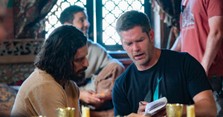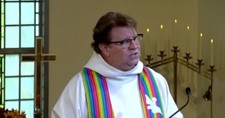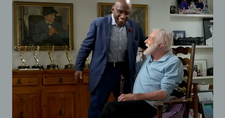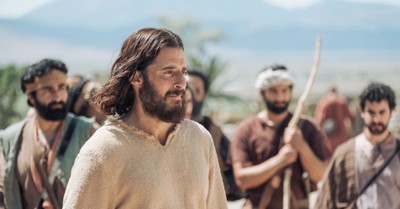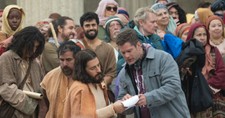
Trending Articles
Recent News
Josiah Queen Reminds Gen Z That ‘Real Life’ Is Found in Scripture, Not iPhones YouVersion Reveals 2025’s Most Popular Verse as Bible Reading Hits Record Levels 5 Questions for Dallas Jenkins about ‘The Chosen’ Season 6 and New Projects Suspect Arrested in Connection with J6 Pipe Bomb Case AI and God’s Creation Mandate Author Alex McFarland Believes Jesus’ Return May Be Closer than Many Think Patriots’ TreVeyon Henderson Spotlights Persecuted Christians with Custom Cleats Cold Moon Supermoon to Take Place as Final Supermoon of 2025 The War is Not Over and There is No Peace The Reason for the Season (of Advent) Five Mistakes to Avoid as a Christian Grandparent Josiah Queen Urges Young Fans to Put Down Their Phones and Pick Up Scripture
Trending Articles
Recent News
Josiah Queen Reminds Gen Z That ‘Real Life’ Is Found in Scripture, Not iPhones YouVersion Reveals 2025’s Most Popular Verse as Bible Reading Hits Record Levels 5 Questions for Dallas Jenkins about ‘The Chosen’ Season 6 and New Projects Suspect Arrested in Connection with J6 Pipe Bomb Case AI and God’s Creation Mandate Author Alex McFarland Believes Jesus’ Return May Be Closer than Many Think Patriots’ TreVeyon Henderson Spotlights Persecuted Christians with Custom Cleats Cold Moon Supermoon to Take Place as Final Supermoon of 2025
Positive Stories
Celebrity
Video
Opinion
Church

Journey Church Gathers to Honor Pastor, Father of Four, Killed in Motorcycle Crash
Milton QuintanillaEntertainment
Sports
Movies
Politics
Israel
Christian News Headlines - Breaking and Trending Religion News
Crosswalk Headlines - Christian news brought to you by a group of Christian writers and editors who are dedicated to creating a well-rounded look at what’s happening across the globe from a Christian worldview. Our vision is to inform and inspire productive discussion about the current events and online trends that shape our lives, our churches and our world.Crosswalk Headlines includes blog posts about current events and Christian media, breaking news, feature articles, and guest commentaries, many written by respected Christian thinkers.


